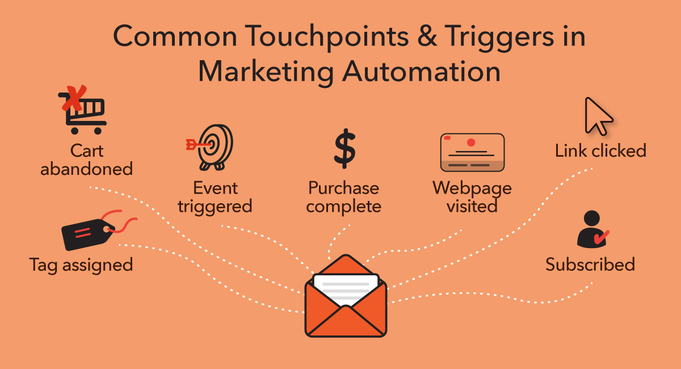
Understanding Marketing Automation: From Basics to Advanced Strategies
Posted on June 5, 2024
Marketing automation has become an essential tool for businesses looking to enhance their marketing efforts, streamline processes, and drive better results. This blog post will delve into the fundamentals of marketing automation, explore its benefits, and discuss advanced strategies to leverage it effectively.
What is Marketing Automation?
Marketing automation refers to the use of software platforms and technologies to automate repetitive marketing tasks. This can include everything from email marketing and social media posting to lead generation, customer segmentation, and analytics. By automating these processes, businesses can save time, reduce human error, and focus on strategic decision-making.
Key Components of Marketing Automation
- Email Marketing Automation: Automated email campaigns allow businesses to send targeted messages to specific customer segments based on behavior, interests, or stage in the sales funnel. For example, a welcome email series for new subscribers or re-engagement emails for inactive customers.
- Lead Management: Automation tools help track and manage leads throughout the sales process. This includes lead scoring, nurturing, and segmentation based on interactions and behaviors.
- Social Media Automation: Scheduling posts, monitoring social media engagement, and analyzing performance can all be automated to ensure a consistent online presence without the constant manual effort.
- Analytics and Reporting: Automated analytics provide real-time insights into campaign performance, enabling marketers to make data-driven decisions quickly.
- Customer Relationship Management (CRM): Integrating CRM systems with marketing automation allows for better management of customer interactions and enhances the overall customer experience.
Benefits of Marketing Automation
- Increased Efficiency: Automating repetitive tasks frees up time for marketers to focus on strategy, creativity, and higher-value tasks.
- Improved Targeting and Personalization: Marketing automation allows businesses to segment their audience effectively and deliver personalized content, increasing engagement and conversion rates.
- Better Lead Management: Automated lead scoring and nurturing help prioritize leads based on their likelihood to convert, ensuring that sales teams focus on the most promising opportunities.
- Enhanced ROI: By streamlining marketing efforts and improving conversion rates, businesses can achieve a higher return on investment for their marketing initiatives.
- Data-Driven Decisions: Access to real-time analytics enables marketers to measure campaign effectiveness, optimize strategies, and allocate resources more effectively.
Getting Started with Marketing Automation
Step 1: Define Your Goals
Before implementing marketing automation, it’s crucial to define clear objectives. What do you want to achieve? Common goals include increasing lead generation, improving customer engagement, or boosting sales.
Step 2: Choose the Right Tools
There are various marketing automation platforms available, each with its own features and pricing. Popular options include HubSpot, Marketo, Pardot, and Mailchimp. Evaluate each platform based on your specific needs, budget, and technical capabilities.
Step 3: Develop a Strategy
Create a comprehensive marketing automation strategy that outlines your target audience, messaging, content plan, and workflows. This should also include how you will measure success and adjust tactics as needed.
Step 4: Start Small and Scale
Begin by automating simple tasks, such as email campaigns or social media scheduling, and gradually expand to more complex processes like lead scoring and nurturing workflows. This incremental approach allows for easier adjustments and learning.
Step 5: Monitor and Optimize
Regularly analyze campaign performance and customer interactions to identify areas for improvement. Use A/B testing to refine your messaging and strategies continually.
Advanced Strategies for Marketing Automation
Once you have a solid foundation in marketing automation, consider implementing these advanced strategies to maximize your efforts:
1. Behavioral Targeting
Utilize behavioral data to send personalized messages based on user interactions. For example, if a user visits a product page but doesn’t make a purchase, an automated follow-up email with a discount code or additional product information can encourage conversion.
2. Lead Scoring and Nurturing
Implement advanced lead scoring models that consider multiple factors, including engagement level, demographic information, and interactions with previous campaigns. This will allow for more precise nurturing strategies tailored to different lead types.
3. Multi-Channel Campaigns
Integrate various marketing channels (email, social media, SMS) into your automation strategy for a cohesive customer experience. For instance, follow up an email campaign with targeted social media ads to reinforce messaging.
4. Dynamic Content
Use dynamic content in emails and landing pages that changes based on user behavior or preferences. This creates a personalized experience that can significantly enhance engagement rates.
5. Lifecycle Marketing
Automate marketing efforts based on the customer lifecycle stage, from awareness to retention. For example, new customers may receive onboarding emails, while long-term customers might receive loyalty offers.
6. Integrations and API Usage
Leverage integrations with other software tools, such as CRM systems, eCommerce platforms, or analytics tools, to enhance the capabilities of your marketing automation strategy. This can improve data accuracy and provide a holistic view of customer interactions.
Conclusion
Marketing automation is a powerful tool that can transform how businesses engage with their customers. By understanding its fundamentals and implementing both basic and advanced strategies, companies can streamline their marketing efforts, improve efficiency, and achieve better results. As the landscape of digital marketing continues to evolve, those who embrace marketing automation will find themselves better equipped to compete in a dynamic marketplace.
Whether you’re just starting or looking to enhance your existing automation efforts, the key is to stay informed, adaptable, and always focused on delivering value to your audience.
Categories: Marketing Technology
